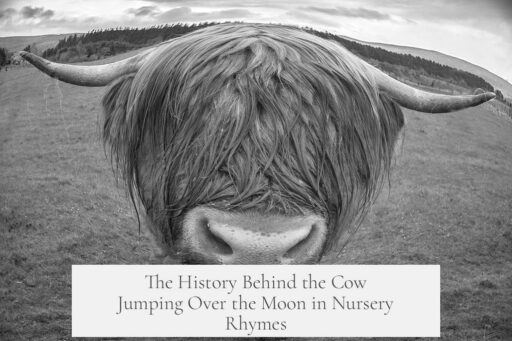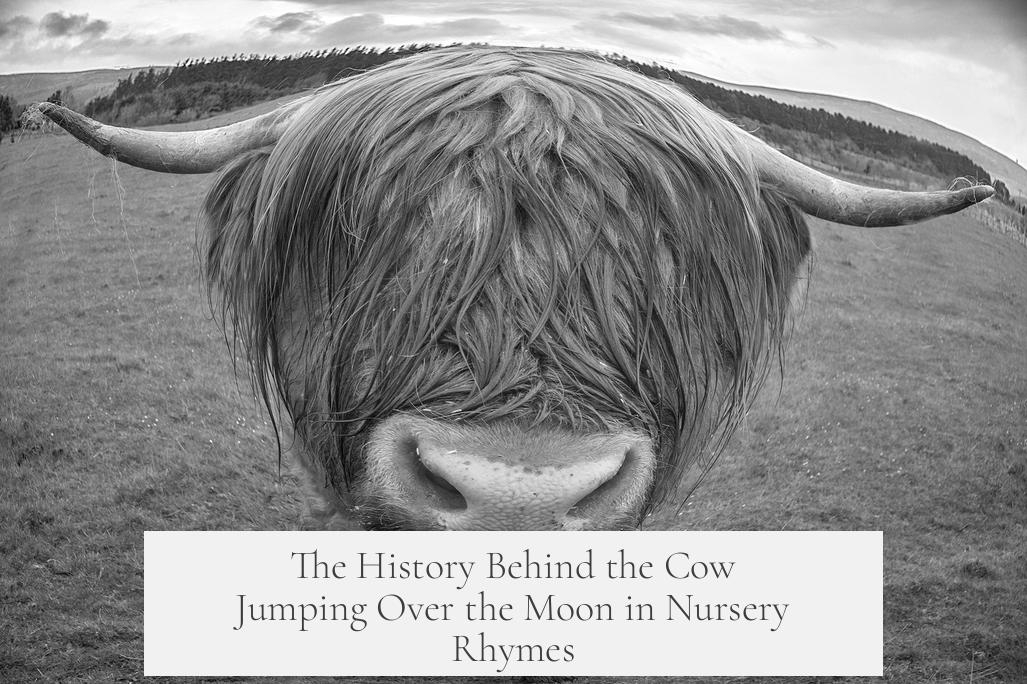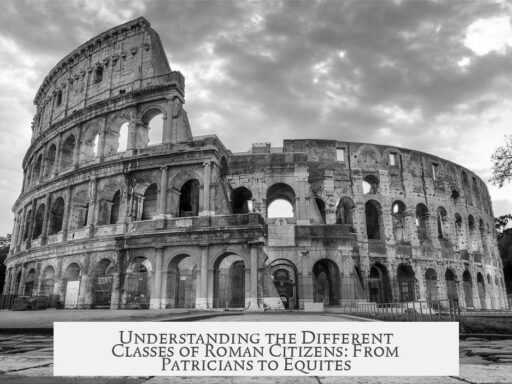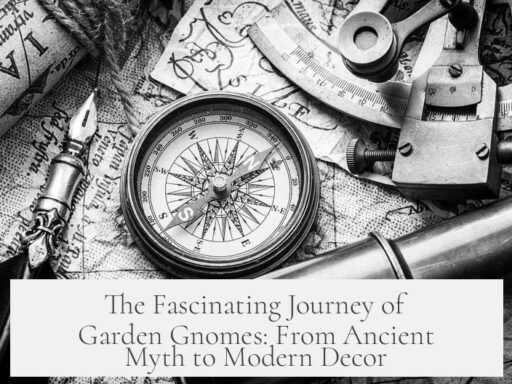The cow first “jumped over the moon” in a nursery rhyme dating back to the early 19th century, specifically around 1819. This famous line is from the classic English nursery rhyme “Hey Diddle Diddle,” which appeared in print in the *London Literary Gazette and Journal of Belles Lettres, Arts, Sciences, Etc* that year. The rhyme playfully describes a cow jumping over the moon, a whimsical image that has enchanted children for generations.
The original rhyme’s text typically reads, “Hey diddle diddle, the cat and the fiddle, the cow jumped over the moon.” Variations exist, with some versions slightly altering the words, such as “hey diddle diddley,” reflecting the oral tradition and regional differences over time.
This nursery rhyme comes from a time when playful, nonsensical verses were common in children’s literature. Its imaginative scenario, featuring animals engaging in human-like actions, helped make it memorable. The idea of a cow leaping over the moon is, of course, fantastical and not meant to be taken literally. Instead, it serves as an example of the light-hearted and imaginative stories told to entertain children.
Beyond its earliest known printed appearance, the rhyme has persisted for more than 200 years, becoming a staple in English-speaking cultures. It appears in numerous collections of nursery rhymes and has inspired adaptations in books, music, and other media. Despite its longevity, no earlier documented source predates the early 1800s for this image of the cow jumping over the moon.
In summary, this whimsical image originated in early 19th century English nursery rhymes, with the first known publication dating roughly to 1819. It remains a charming part of children’s folklore and a classic example of playful poetic nonsense.
- “Hey Diddle Diddle” is the nursery rhyme containing the phrase.
- First published around 1819 in the London Literary Gazette.
- Variations of wording exist, reflecting oral tradition.
- The rhyme is an example of whimsical poetic nonsense.
- No factual event exists; it is a fictional image from children’s literature.
Since When Did the Cow Jump Over the Moon? A Dive into Nursery Rhyme History
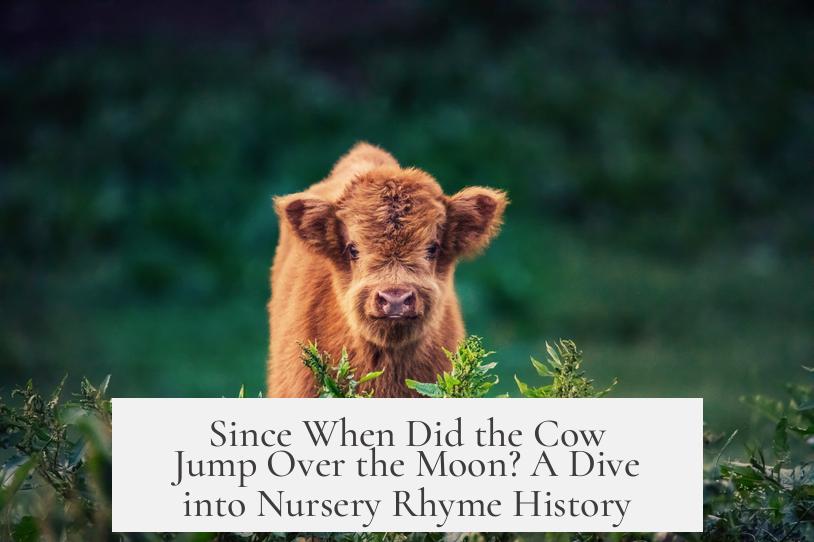
Since when did the cow jump over the moon? The iconic cow leaping over the moon first entered our imaginations through a nursery rhyme dating back to the early 1800s, specifically around 1819. Yes, that whimsical image of a bovine bouncing across celestial bodies isn’t just bedtime fantasy; it’s over two centuries old!
We’ve all heard or sung it: “Hey diddle diddle, the cat and the fiddle, the cow jumped over the moon.” But where did this charming verse come from? How did the cow become such an expert astronaut in children’s literature? Let’s unpack this quirky question with some historical and cultural flavor.
The Birth of a Sky-Leaping Cow: Nursery Rhyme Origins
The tale of a cow jumping over the moon hails from a classic nursery rhyme. This rhyme was well-known by the first half of the 19th century and likely circulated orally before hitting print. The earliest documented mention ties back to 1819.
The rhyme typically starts with a jingle that’s most familiar:
“Hey diddle diddle, the cat and the fiddle, the cow jumped over the moon.”
Interestingly, some versions of this nursery rhyme show a playful twist with the phrase, sometimes appearing as “hey diddle diddley.” Was it just creative license, or a dialectal variation? Hard to say, but it certainly adds character.
The Earliest Printed Proof: 1819 and the London Literary Gazette
If you love treatises or literary history, the London Literary Gazette holds a special place—it chronicled the earliest known printed version of this rhyme. In the 1819 edition, the verse appeared, marking it formally in written English literature.
This publication is a crucial touchstone for historians or fans gazing at the rhyme’s origins. Before 1819, it’s possible the rhyme was passed down orally from one generation to the next. After 1819, thanks to print, the cow’s moon-jumping credentials were solidified.
Why the Moon? Why a Cow? Let’s Get Practical
You might wonder why a cow jumps over the moon or how this imagery took hold in nursery rhymes. The moon has long been a symbol of wonder and imagination, especially for kids. Combining a familiar farm animal with a celestial act triggers curiosity and delight.
Nursery rhymes often use silly or impossible imagery to spark interest and memorability. How many other rhymes mix animals and musical instruments? The cat playing the fiddle adds another layer of whimsical surprise.
Children’s rhymes also sometimes incorporate rhythm and nonsense words to strengthen language skills and auditory memory. The “hey diddle diddle” is a prime example of such playful sounds.
Variations and Evolution: Just How Does the Cow Jump?
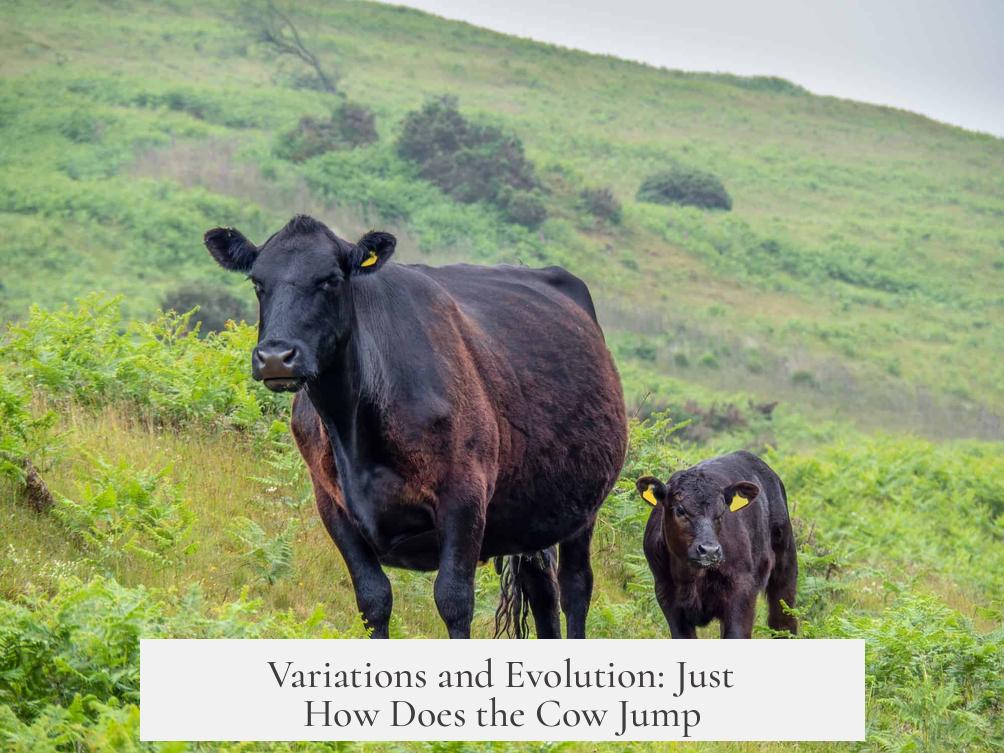
Over the years, people have debated whether the cow “jumped over” or “under” the moon. The more widely accepted and popular version is definitely the cow jumping over the moon. But this playful dispute hints at how nursery rhymes evolve as they are retold and adapted.
Different versions add or subtract words or tweak sounds, making the rhyme feel fresh. This kind of linguistic variation is common in folklore and oral traditions.
How Does Knowing the Rhyme’s Origin Help You?
Understanding that “the cow jumped over the moon” has a history reaching back to 1819 connects you to centuries of storytelling magic. It shows how nursery rhymes serve as vessels of culture and language through time.
This knowledge might inspire parents or educators to dig deeper into the rhyme with kids, turning a simple bedtime chant into a mini history lesson. It’s also a reminder that childhood stories often have rich backstories waiting to be uncovered.
Breaking It Down: Tips for Sharing the Rhyme with a Modern Twist
- Tell the story behind the rhyme: Mention the rhyme’s age and the London Literary Gazette’s role in preserving it.
- Encourage imagination: Ask kids why they think the cow might jump over the moon.
- Explore variations: Recite both “hey diddle diddle” and “hey diddle diddley” to show how stories change.
- Connect to science: Discuss what the moon really is and why cows can’t actually jump that high! (Warning: No cows were hurt in the making of this rhyme.)
- Make it interactive: Create a simple craft or drawing showing the cow jumping over the moon.
So, What’s the Big Takeaway?
The cow’s leap over the moon is not just a quirky absurdity. It’s a snippet of cultural storytelling dating back over 200 years. This nursery rhyme has traveled through time and print, beguiling children and adults alike with its nonsense charm.
Next time you hear or recite “Hey diddle diddle,” remember: you’re joining a long tradition that began in the early 1800s. The cow might never really jump the moon, but its leap has certainly jumped into history!
When did the nursery rhyme about the cow jumping over the moon first appear?
The rhyme dates back to the early 1800s. The earliest known print appearance was around 1819 in the London Literary Gazette.
What is the exact line from the original rhyme?
The original line is “Hey diddle diddle, the cat and the fiddle, the cow jumped over the Moon.”
Were there any variations to this rhyme when it was first published?
Yes. Some versions say “hey diddle diddley” instead of “hey diddle diddle,” showing slight differences in wording.
Is the story of the cow jumping over the moon meant to be taken literally?
No, it is a playful nursery rhyme, part of children’s folklore, not an actual event or literal story.
Why does the rhyme mention the cow jumping over the moon?
The phrase adds a whimsical and imaginative image, common in folk rhymes, to entertain children with fun and fantasy.
